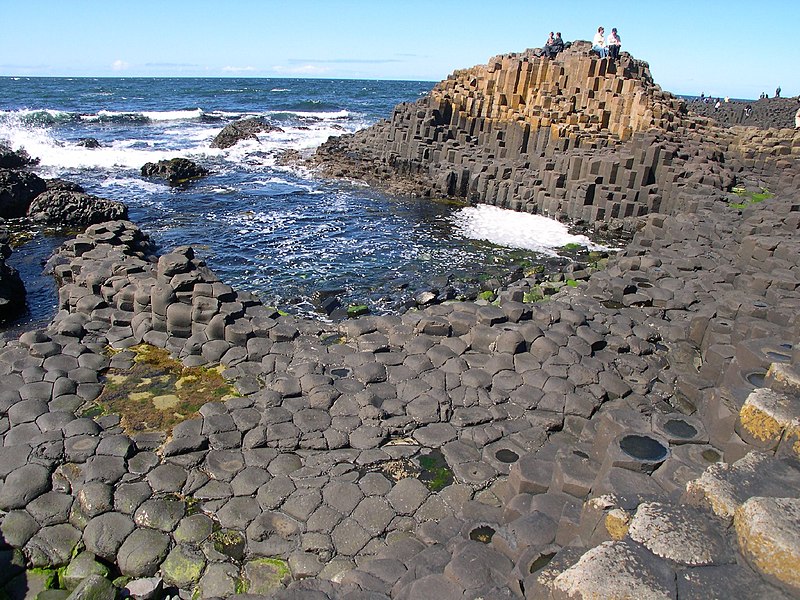In December 2012 I blogged about Fingal’s Cave on the island of Staffa. The geology that is the cause
of the cave’s distinctive appearance is the same as that on view at the Giant’s
Causeway, namely the strangely uniform interlocking hexagonal basalt columns
formed from cooling lava. The unique nature of this coastal wonder has earned
it the status of World Heritage Site, and it is run by the National Trust, with
all the associated trappings such as shop and tea room. From the car park there are buses on hand for
anyone who does not fancy the hike down to the causeway.
When the causeway was discovered by the Bishop of Derry in
1692, no-one was sure whether the feature was man-made or created by
nature. There was even a school of
thought that a giant was responsible for it, hence the name given to it. The favourite candidate was one
Finn McCool. The story goes that there
was a battle between Finn and a Scottish giant who was threatening
Ireland. Finn started throwing chunks of
rock into the sea to form a pathway towards his Scottish enemy. In reality, as indicated above, it is ancient
volcanic activity that was responsible for this most unusual of coastal
features, as explained in the Visitor Centre. The Causeway is a must-see for anyone visiting Northern Ireland, and is probably the best known and most visited site in this corner of the British Isles. When we visited we stayed in a nearby roadside pub; alternatively the nearby village of Bushmills makes a good base.
 |
Causeway-code poet-4. Photo by code poet, via Wikimedia Commons.
|
